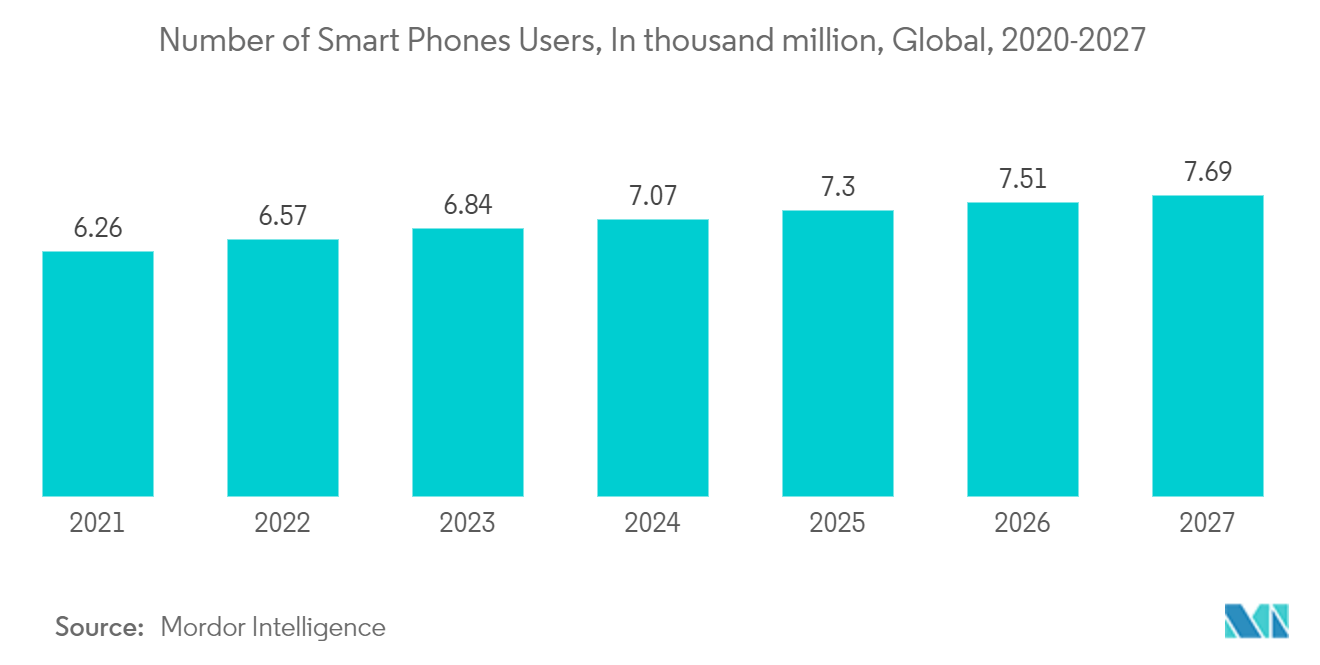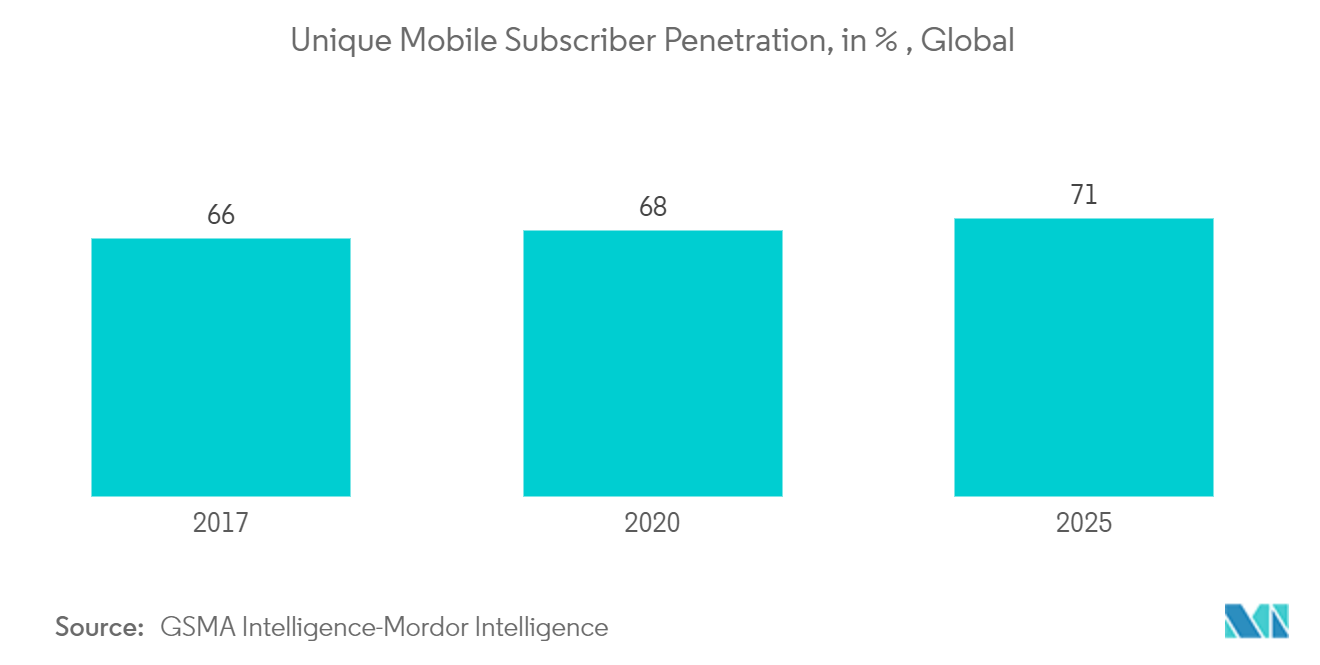Market Trends of South Asia Mobile Gaming Industry
This section covers the major market trends shaping the South Asia Mobile Gaming Market according to our research experts:
The growth of eSports in the region is driving the Mobile Gaming Market in South Asia Region.
- South Asia's rapidly rising internet population and high smartphone penetration have aided the emergence of mobile esports, inspired by the region's younger demographic. Infrastructure and internet access will help support the region's growing gaming industry. Companies are also encouraged to keep gamers in the region. For example, BreederDAO is an esports firm that helps players breed the strongest NFTs in play-to-earn games. In contrast, AcadArena helps student gamers in South Asia compete globally.
- The trend of providing esports infrastructure in the region is remarkable. Technological advancement, 5G technology, and Emerging economies are fuelling the growth, and even hotels are built according to the esports gaming theme. For example, The SEM9 Senai Esports Hotel is in Senai, Johor, Malaysia, and offers beautiful accommodations with the most up-to-date mobile gaming technology. This shows the market potential for mobile gaming in the region.
- Thailand's Digital Economy Promotion Agency (DEPA) is working to promote the Thai gaming industry to grow and create new jobs while also stimulating economic growth. The Tourism and Sports Ministry and Thailand's Sports Authority (SAT) have teamed with Garena Online Thailand to strengthen the country's e-sports business and establish Thailand as an e-sports tournament hub in ASEAN. According to the minister, the e-sports business in ASEAN was worth USD 39 million in 2020 and is predicted to grow to USD 72 million by 2024 as people spend more time playing online games.
- The region is witnessing various mergers and acquisitions in the esports sector, positively impacting the South Asia Mobile gaming market. For example, Ampverse, an esports company based in Singapore, has raised USD 12 million in Series A funding headed by Falcon Capital. Based on statistics from Pitchbook and other third-party sources, the firm claims that this is the largest Series A raised by an esports organization in South Asia. The funds will be used to expand Ampverse's play-to-earn business in Indonesia and the Philippines, as well as to acquire new esports teams and scale the company's play-to-earn unit.
- In addition, Skylightz Gaming, a gaming and esports company based in Singapore, has announced its aspirations for India. By financing USD 150,000 by FY22, the company hopes to enable massive effect and growth for all Indian esports players. With the expansion in India, it hopes to give international exposure to the rising esports talent across the country. Skylightz Gaming's investment will be used to provide players with new devices, boot camps, and studios for post-production purposes and practices. The gaming corporation supports multiple esports teams in Indonesia with great BGMI experience. Because of this development in esports, the South Asia Mobile Gaming market will grow exponentially.

5G network and increasing usage of smartphones in the region are driving the mobile gaming market in the South Asia region.
- With the initial Razer Phone, the American-Singapore tech company Razer attempted to bring gaming to a mobile device. This was a particularly excellent initial try. The phone, on the other hand, has several serious problems. As a result, the Razer Phone 2 was released after the business addressed some of the shortcomings of its first product. Under the hood, the second iteration has additional power. However, it is aimed squarely at mobile gamers. The phone sports an Ultra Motion IGZO display with HDR support. It also features a 120Hz refresh rate. This will help the mobile gaming market to grow in the region.
- The increasing rate of 5G adoption in the region makes phones more suitable for gaming and directly drives the mobile gaming market in South Asia. Companies in the region are also partnering with telecom providers to implement 5G. For example, Taiwan Mobile (TWM) has chosen Nokia to provide technology to support its growth strategy to expand 5G coverage across the country.
- In addition, TWM's spectrum assets, which comprise the 700MHz and 2100MHz bands, will also benefit from the introduction of 4G/5G dynamic spectrum sharing. Nokia will assist the operator in modernizing its LTE infrastructure and consolidating network management and optimization into a single solution for improved 4G/5G RAN network performance. This improved network performance will be helpful for mobile gaming's smooth functioning and ultimately drive the mobile gaming market in South Asia.
- With a new cloud gaming service announced by Singapore-based telco Star Hub, it is now feasible to play high-end video games on the go and on low-end smartphones. Gamers on the go can benefit from the new service by playing on 5G mobile networks, which are predicted to have less lag than 4G. This results in a more smooth and responsive gameplay experience.
- Many gaming production companies have transformed their businesses by prioritizing launching games for mobiles. For example, Hyper Front, a mobile-optimized first-person shooter, is now available in the Google Play Store for users in the Philippines, Thailand, Malaysia, and Singapore. This can be understandable by the growth of mobile gaming in the South Asia region.


